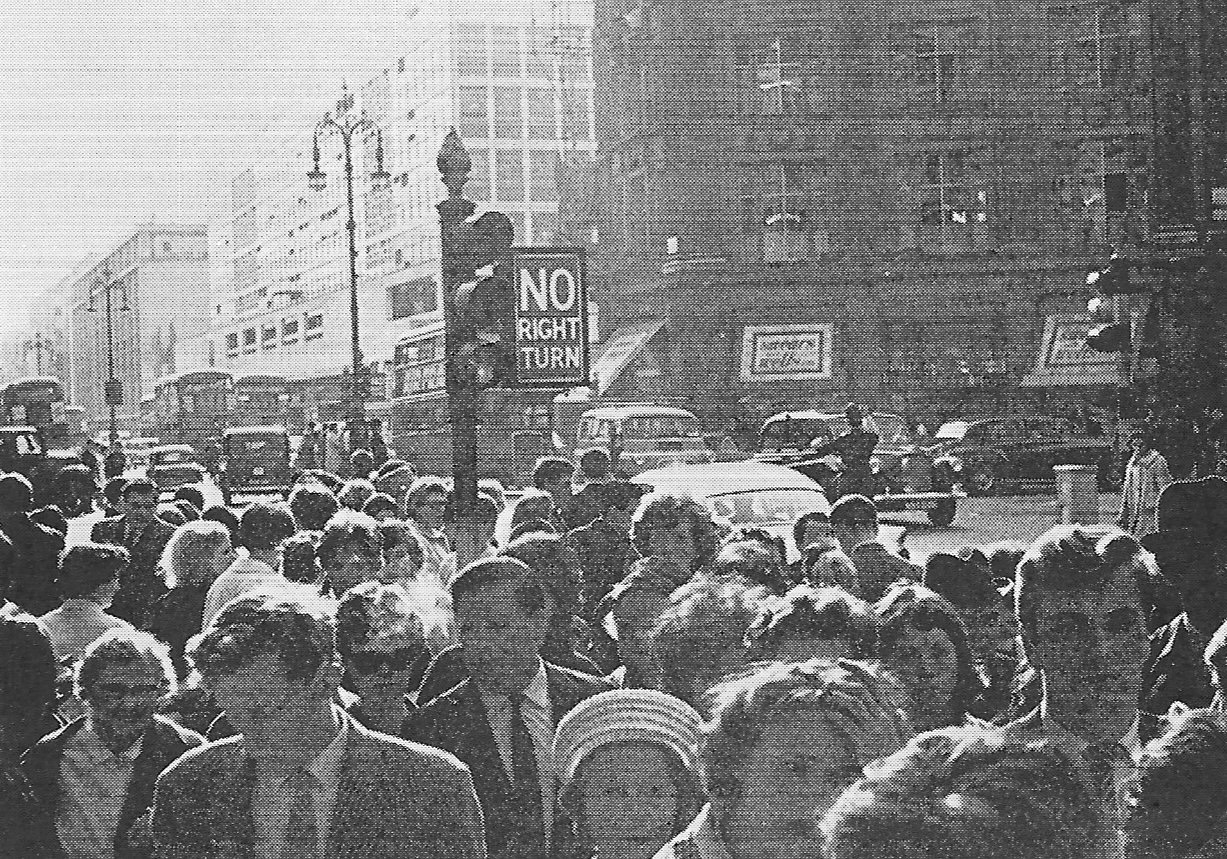Chapter II: The theoretical basis
Environmental capacity of streets: 129–132
As traffic increases in the future it seems inevitable that the assessment of environmental capacity will become of more and more significance. Already, in fact, it is the crucial issue in many streets
Environmental capacity of streets
129
Environmental capacity of streets. All this suggests that with further knowledge it would be possible to take any existing street and after examination of its dimensions, the uses and character of the adjoining buildings, and the amounts of pedestrian traffic along and across it, to define the volume and character of the traffic permissible in the street consistent with the maintenance of good environmental conditions. This amount of traffic might be called the ‘environmental capacity’ and in all probability it would be much lower than the sheer number of vehicles that could be got along the street or that could be accommodated in parking spaces. This second figure might be called the ‘crude capacity’. From this idea that an environmental capacity could be defined for a street and the adjacent buildings it serves, it is only a step to the possibility that both environmental and crude capacities could be evaluated for complexes of streets, or for whole environmental areas.*
*Possible methods of measuring these capacities are discussed in Appendices I and 2.
It is often said that streets are for the passage of traffic only, and although this may be a sound legal view it has obscured the fact that streets perform other functions, some of them vital. They give access to buildings, they provide an outlook from buildings, they give light and air, they are the setting for architecture, and they are the backbone of the everyday surroundings for many people. It is impossible to maintain that these functions are subordinate to the passage of vehicles. As traffic increases in the future it seems inevitable that the assessment of environmental capacity will become of more and more significance. Already, in fact, it is the crucial issue in many streets. On what basis, for example, is it possible to begin planning the future of that famous street at Oxford, the High street, other than by calculating its environmental capacity and then considering what steps are needed to reduce the traffic to that figure and to prevent its being exceeded in the future? Or, to take another example, what can now be done about Oxford Street, London (the opportunities for imaginative redevelopment having been largely missed already) other than to accept it as a major shopping street, to calculate its environmental capacity, and to take steps to bring the traffic down to the appropriate figure and to stabilise it there?
131It is being seriously suggested here that the time is fast approaching when hundreds of streets in hundreds of towns and villages, will have to be classified for their primary function, and if it is an environmental function (e.g. shopping, residential) then the yard-stick for all planning and improvement works must be the environmental capacity. Otherwise streets will steadily become more unpleasant, and people will begin to forsake them for places where comprehensive development has been undertaken and far better conditions are offered. To make our standpoint clear beyond any doubt, we do seriousIv invite the reader to consider the example of Oxford Street, London, and to conclude that what is now emerging in that street is a travesty of conditions as they ought to be in a great capital city (Figure 64).
132In some streets the reduction of the traffic to match the environmental capacity could be achieved by squeezing out all the extraneous traffic with no business in the street, but in others the environmental capacity might be so low as to prevent the entry even of traffic essential to the functioning of the buildings along the street. In these cases other measures would have to be resorted to, e.g. the entry of service vehicles after hours, or the provision of new loading facilities at the back or side of buildings. But the important point is that the estimation of environmental capacity provides an immediate pointer to the policy to be adopted for the street. Only in this way is it possible to answer the person who says, reasonably enough, ‘The conditions in this street would be quite acceptable if there were not so much traffic.’ The person who says this is in fact expressing a view on the environmental capacity, and seeking the application of an environmental standard.
